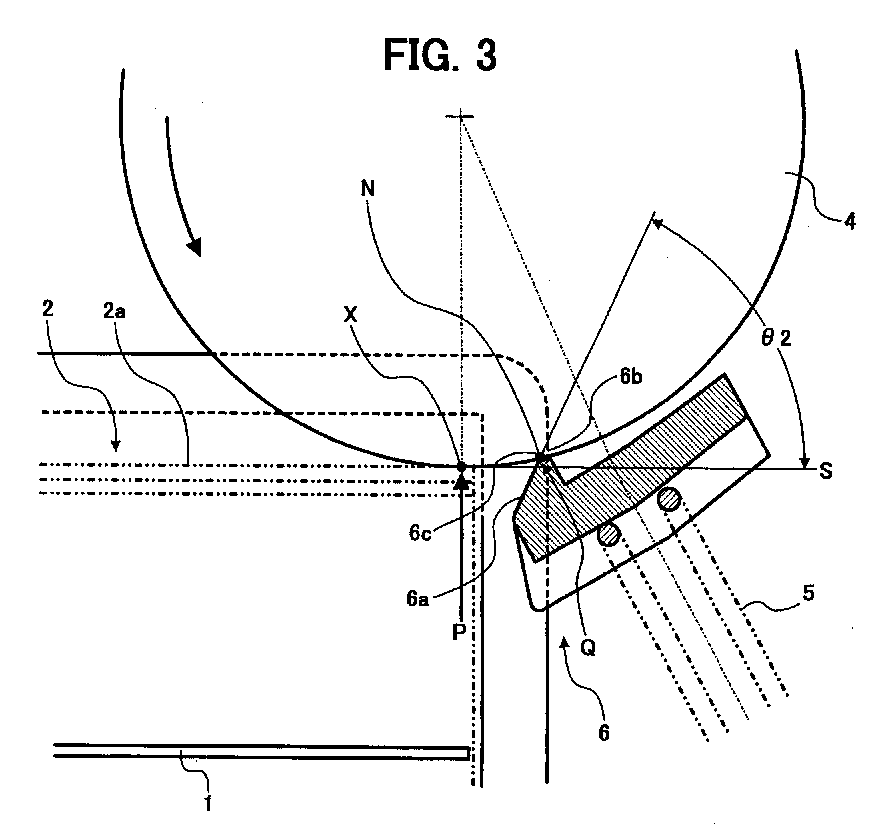(57) A method for feeding sheet materials is disclosed, which is implemented by forwarding
a plurality of sheet materials (2) loaded on a loading plate (1) with a rotating feeding
roller (4) toward a separation unit, for the leading edge of the sheet materials (2)
to be collided with a tapered face (6a) of taper member (6), and subsequently separating
the uppermost (2a) of the loaded sheet materials (2) through frictional force from
the feeding roller (4) after climbing over the taper member (6) to be forwarded further
to an image forming unit by way of a nip forming portion (N), while other underlying
sheet materials are halted by the taper member (6) owning to smaller frictional forces
there between, thereby obviating the multiple feeding. In addition, the conditions
suitable for sheet feeding can be satisfied for various sheet materials different
in size and thickness by adjusting the distance between the point of contact (X) of
the uppermost sheet material (2a) with the feeding roller (4) and that of nip formation
(N), such that modulus values are equated to various sheet materials. As a result,
considerably high sheet separation qualities are obtained obviating undue non-feeding
or multiple feeding, and various kinds of sheet materials different in size, thickness
and coefficient of friction, can be forwarded sheet by sheet securely to image forming
unit, thereby achieving satisfactory image formation by means of image forming apparatuses
incorporating the sheet feeding apparatuses disclosed herein.
|

|
